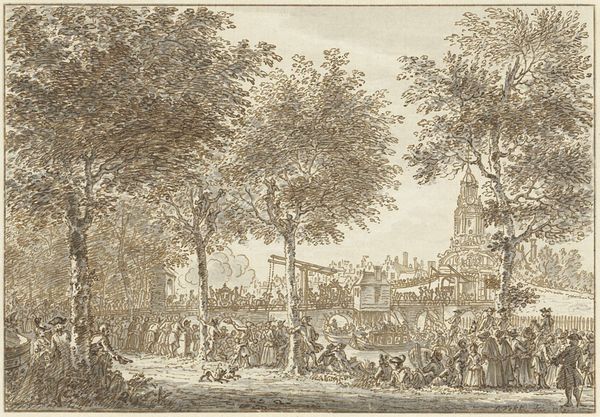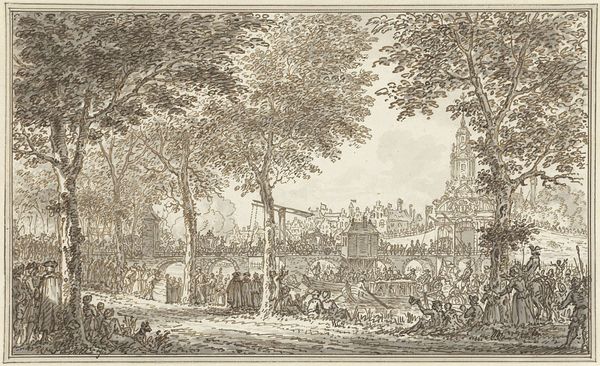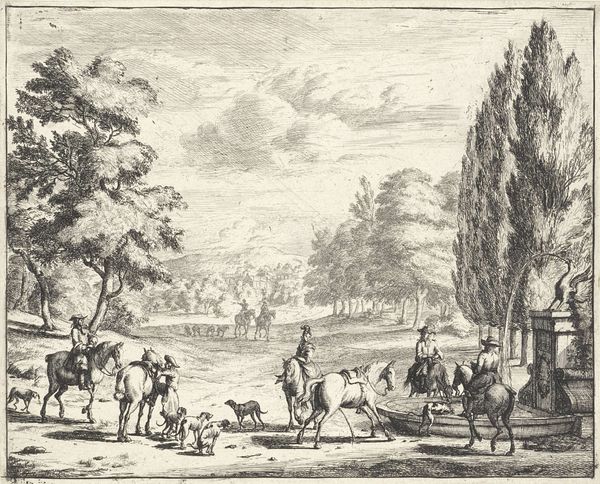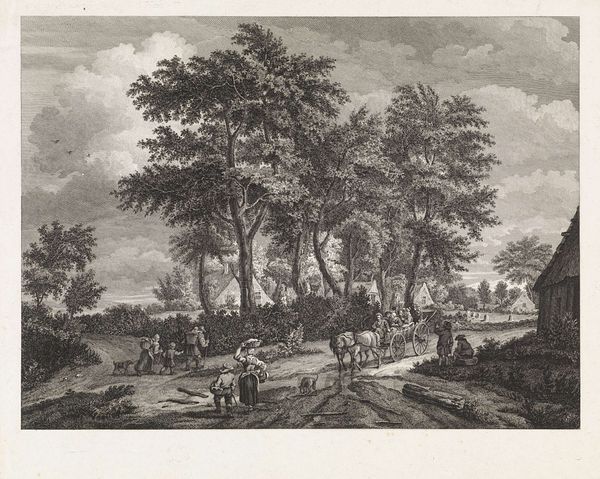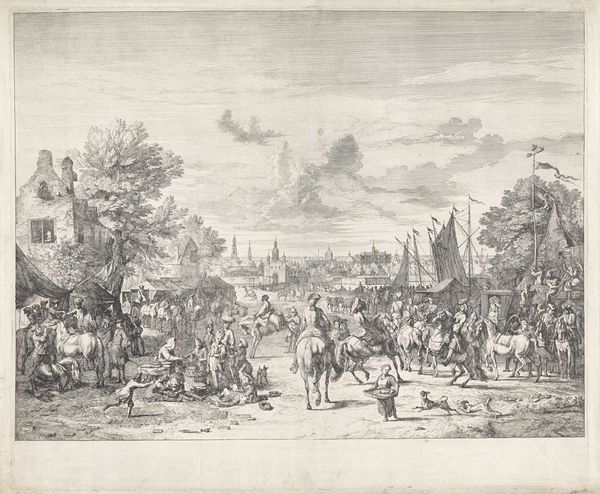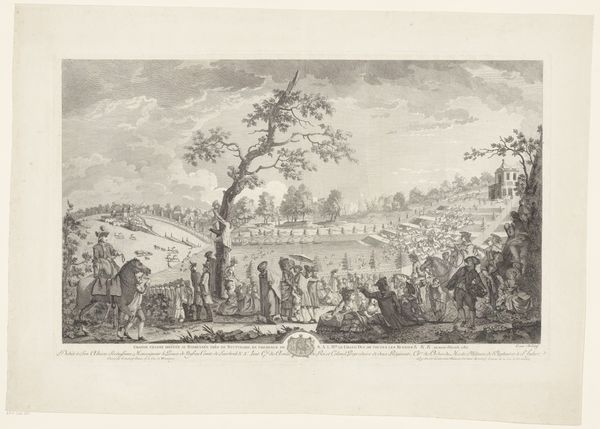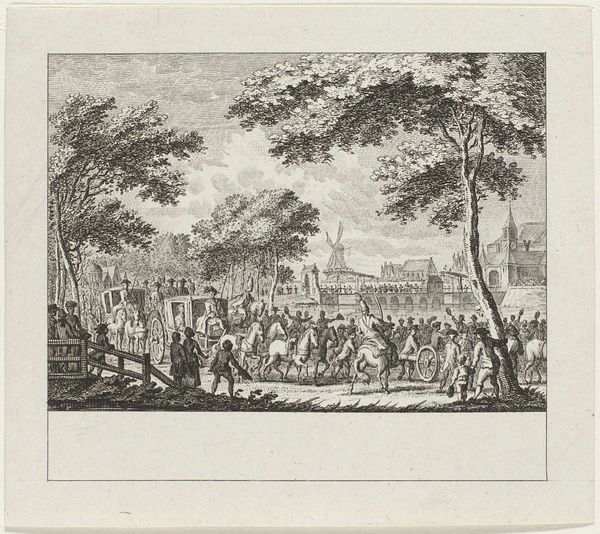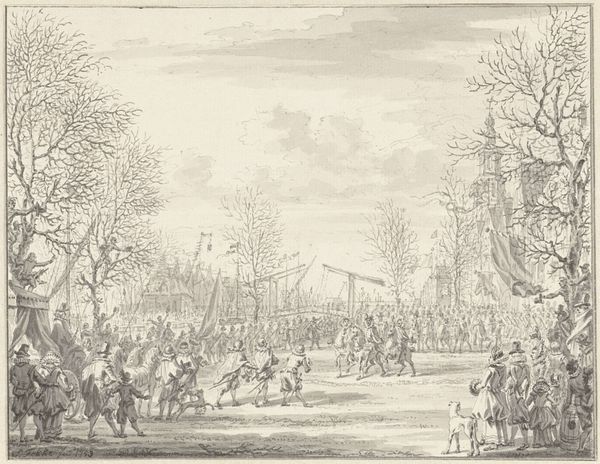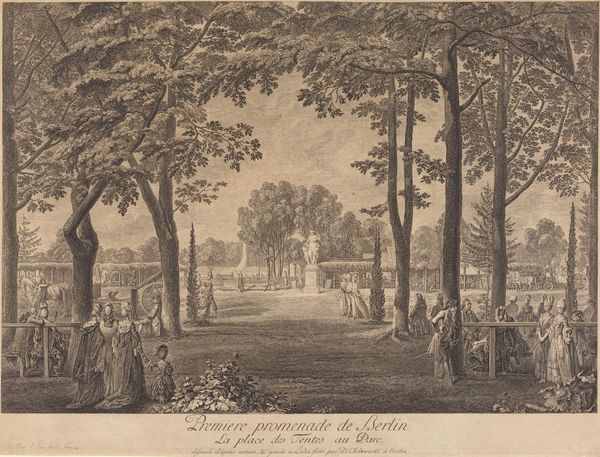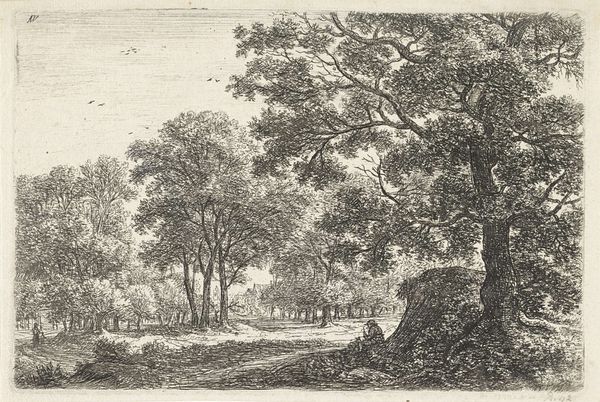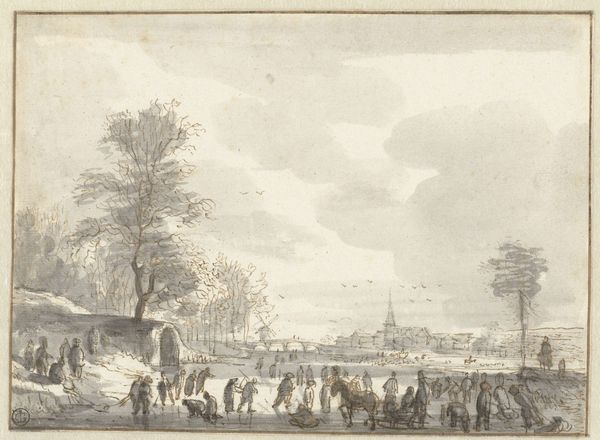
drawing, print, etching, engraving
#
drawing
#
dutch-golden-age
# print
#
etching
#
landscape
#
etching
#
cityscape
#
genre-painting
#
history-painting
#
engraving
Dimensions: height 140 mm, width 203 mm
Copyright: Rijks Museum: Open Domain
Curator: I'm immediately struck by the tranquility despite the implied activity in Hendrik Soukens's "Jaarmarkt onder bomen," which translates to "Annual Market Under Trees." It's rendered with such fine etching that the whole scene feels both bustling and peaceful. Editor: It's an interesting contradiction. We’re viewing a snapshot of 17th-century social life, the etching seems almost clinical. What can you tell us about these types of markets, and how they functioned within the period? Curator: Well, these markets were vital economic and social hubs. Soukens, through his artistry, presents not only commercial exchange but also glimpses into leisure and social interaction. I read into the groupings, a real communal feeling, especially in these carefully etched figures gathered near what appears to be a food vendor. This reflects the importance of the markets as points of exchange, of material goods and perhaps cultural information too. Editor: I can appreciate the idea of continuity in cultural imagery here. Though the market form is very specific to a place and era, public gathering places, for meeting and exchanging, still resonate strongly. Do you feel like Soukens has specific aims in showing us this historical event? Curator: That's a very valid question. Although "Jaarmarkt onder bomen" captures a genre scene, depicting everyday life, Soukens may well have intended it as a comment on the human condition. Note, for instance, how detailed the surrounding flora is drawn with what I can describe as an almost scientific level of precision; Soukens is a master of observation, and perhaps the market is a stage for a broader reflection on society, culture, and even our relationship to nature. Editor: Fascinating. The meticulous detail you highlighted, the figures and their activities...it lends a powerful sense of a lived moment, one echoed down the years. Considering its role as a historical record, what purpose did prints and engravings serve in the society of the time? Curator: In Soukens’ era, etchings such as this functioned much like newspapers do for us: documentation of contemporary events. Furthermore, prints like this were often more affordable than paintings, making art more accessible to a wider audience. Soukens was democratizing imagery. Editor: That gives us something concrete to reflect on. It shows that art doesn't simply float in the ether. Art reflects a conscious intention on the part of its creator. Thanks, that's certainly deepened my view. Curator: And for me, recognizing the symbolic echoes, understanding how they've maintained their strength through the centuries; that's a reminder of the collective visual language we share.
Comments
No comments
Be the first to comment and join the conversation on the ultimate creative platform.
